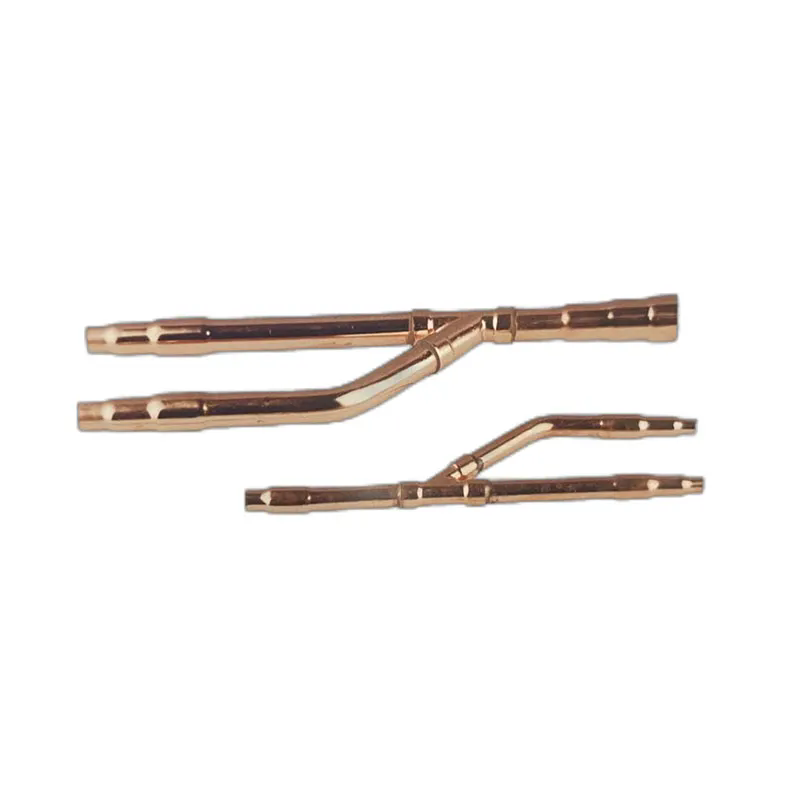What Role Does a Branch Pipe Play in Efficient Plumbing Systems and How Does It Improve Water Flow?
2025-02-19
When it comes to plumbing systems, we often focus on the main pipes, the water heaters, or the faucets that bring water to our homes. However, there is one critical component that plays a significant role in directing the flow of water to various parts of a building: the branch pipe. So, what exactly is a branch pipe, and how does it contribute to the overall efficiency and effectiveness of a plumbing system?
What Is a Branch Pipe?
A branch pipe is a smaller pipe that connects to the main supply pipe and directs water to specific areas of a building. These pipes "branch off" from the main line, distributing water to different parts of a house or commercial facility. They are often used to bring water to different fixtures such as sinks, showers, or toilets. Branch pipes come in various sizes, materials, and configurations depending on the plumbing requirements of a building.
In essence, branch pipes act as the key distributors of water, allowing for a more efficient plumbing system by splitting the flow of water from the main supply line into multiple smaller lines that can serve various parts of a building.
How Do Branch Pipes Improve the Efficiency of Plumbing Systems?
Branch pipes are essential for creating a well-organized and efficient plumbing layout. Without them, water would be forced to flow directly from the main supply pipe to each fixture, which would be inefficient and potentially lead to higher pressure losses.
By using branch pipes, water is directed to where it’s needed in a more controlled and efficient manner. This distribution ensures that water flows smoothly and evenly to different parts of a building, minimizing wastage and ensuring that fixtures receive an adequate and consistent water supply. Additionally, the use of branch pipes helps to maintain optimal water pressure, which is crucial for the proper functioning of plumbing fixtures.
How Are Branch Pipes Installed in Plumbing Systems?
The installation of branch pipes is an integral part of designing a plumbing system. Plumbers must carefully plan where each branch will connect to the main supply pipe, ensuring that the flow of water is not interrupted or overburdened by too many connections.
Branch pipes are typically installed using tees or elbows that join them to the main pipe. These fittings allow for a seamless connection that ensures the water flow is steady and uninterrupted. Proper installation is key, as poorly connected branch pipes can lead to leaks or insufficient water pressure in certain parts of the system.
In larger plumbing systems, it’s important to size the branch pipes correctly to prevent issues with water pressure. Too small of a branch pipe can cause a drop in pressure, while overly large pipes may lead to unnecessary space and costs.
What Materials Are Branch Pipes Made From?
Branch pipes are available in a variety of materials, each suited for specific applications and plumbing conditions. Common materials include:
- PVC (Polyvinyl Chloride): Lightweight and resistant to corrosion, PVC is a common choice for residential plumbing systems. It’s easy to install and maintain, making it a popular option for branch pipes.
- Copper: Copper pipes are durable and resistant to corrosion, which makes them ideal for both hot and cold water applications. However, they can be more expensive than other materials.
- PEX (Cross-Linked Polyethylene): PEX pipes are flexible, easy to install, and resistant to freezing, making them an excellent choice for modern plumbing systems.
- Galvanized Steel: Galvanized steel pipes are strong and long-lasting but are less commonly used today due to the rise of more cost-effective and corrosion-resistant materials.
The choice of material depends on various factors, including the local climate, the type of plumbing system, and budget. Each material offers its own set of benefits, so selecting the right one for branch pipes is crucial for a well-functioning plumbing system.
How Do Branch Pipes Contribute to Water Conservation?
Branch pipes can indirectly contribute to water conservation by improving the overall efficiency of a plumbing system. Properly sized and installed branch pipes ensure that water is delivered directly to the fixtures that need it, without excessive wastage.
In addition, branch pipes are often designed to prevent issues like leaks, which can be a significant source of water loss. By ensuring that water is delivered more efficiently to various areas, the need for constant adjustments to water flow or additional fixes is minimized, ultimately reducing the consumption of water.
Moreover, some modern branch pipe systems are designed to accommodate water-saving fixtures, such as low-flow toilets and showerheads, which further contributes to overall water conservation efforts.
How Do Branch Pipes Affect the Pressure in Plumbing Systems?
Water pressure is a critical factor in the performance of any plumbing system, and branch pipes play a significant role in maintaining consistent pressure throughout a building. When water is directed through a branch pipe, it can experience slight pressure losses due to friction between the water and the pipe walls.
To prevent any significant drops in water pressure, branch pipes must be properly sized and aligned. If a branch pipe is too narrow, it may not allow enough water to flow through, which can result in weak water pressure at the fixture. On the other hand, a branch pipe that is too wide may not offer sufficient resistance to maintain a steady flow of water.
A well-designed plumbing system ensures that the right balance is struck between the main pipe and the branch pipes, optimizing water pressure and ensuring that each fixture receives the right amount of water at the correct pressure.
Why Are Branch Pipes Important for Commercial Plumbing Systems?
In commercial settings, branch pipes are even more critical because of the increased water demand and the need for precise water distribution. Large buildings with multiple floors or businesses that require water for manufacturing processes need a highly organized and reliable plumbing system.
In these systems, branch pipes help to distribute water evenly across a large area, providing each department or section of the building with the required water supply. A single main pipe can’t effectively meet the demands of a large commercial building without a network of branch pipes to direct the flow appropriately.
Additionally, branch pipes allow for easier maintenance and repairs. If a particular section of the building experiences a plumbing issue, plumbers can isolate the branch pipe serving that area without affecting the entire system, minimizing downtime and operational disruption.
Conclusion
Branch pipes play an essential role in the functionality and efficiency of plumbing systems, both in residential and commercial buildings. By directing water to where it’s needed and ensuring the smooth flow of water throughout the system, branch pipes contribute to water conservation, optimal water pressure, and the overall effectiveness of a plumbing system.
Whether you’re designing a new plumbing system or upgrading an existing one, it’s crucial to consider the role of branch pipes in ensuring that water flows efficiently and reliably to all the fixtures in your building. So, next time you take a shower or turn on the faucet, you’ll have a better understanding of how branch pipes work to keep your water running smoothly!



